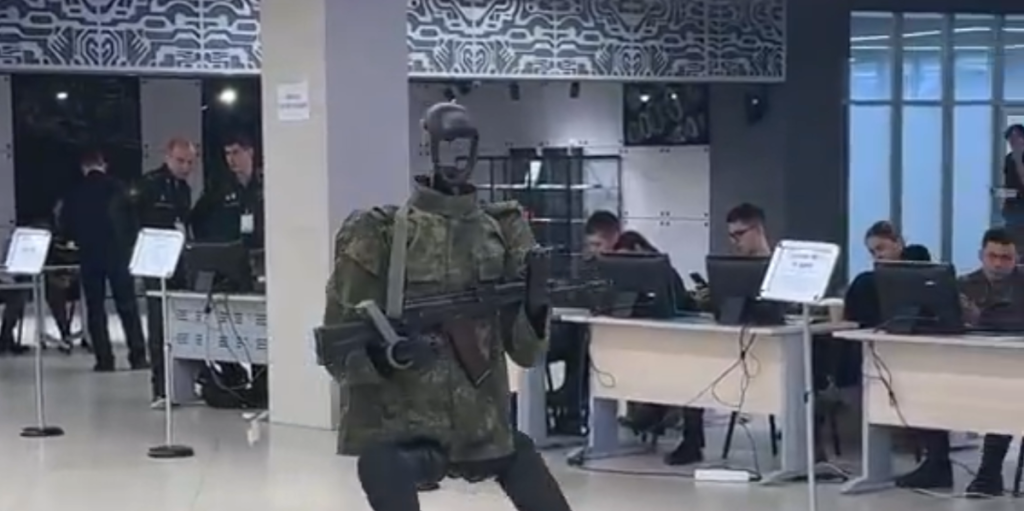For years Russia has promoted the idea that advanced robotics will give its armed forces an edge, especially as the war in Ukraine drags on.
Others are reading now
Moscow’s military industry often releases dramatic showcases meant to highlight progress, even if past unveilings have drawn more ridicule than praise.
This week, new footage of a humanoid robot circulated online and once again sparked debate about how far Russia has really come.
Leaked footage spreads
Images posted on social media show a humanoid machine dressed in a Russian military uniform and carrying what appears to be a Kalashnikov-style rifle.
The clips look to have been recorded at a closed conference for Russian defense officials, according to the posts circulating on X.
The device is seen moving across a stage and posing for photographs as officials stand nearby.
Also read
Russian state-linked channels framed the appearance as evidence that new battlefield technologies are nearing deployment.
The videos quickly went viral, drawing thousands of reactions within hours.
Public reaction online
Many viewers responded with humor rather than awe.
Users compared the robot’s appearance to fictional characters and exaggerated physical traits, once again raising questions about the credibility of Russia’s technology demonstrations.
“He looks like Jack Skellington,” one user commented. Another wrote, “He looks like a 90-year-old grandpa with an enlarged prostate.”
Also read
Critics noted that Russia has often showcased early prototypes that struggle during basic presentations.
Earlier mishaps
The reaction was amplified by a recent incident at a Moscow tech event, where an earlier Russian-designed humanoid robot collapsed on stage during its official introduction.
Staff members rushed forward to cover the machine while they attempted to correct the fault, prompting further online mockery.
Despite this, Russian officials continue to promote their robotics programs as signs of innovation and resilience.
This article is made and published by Kathrine Frich, who may have used AI in the preparation


